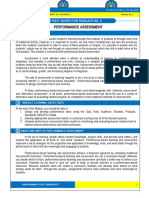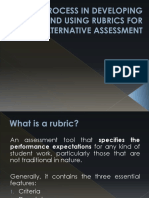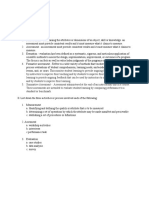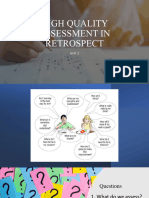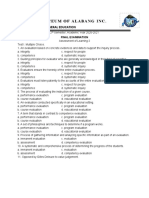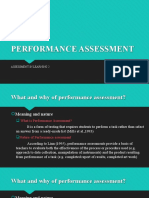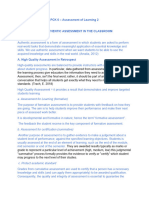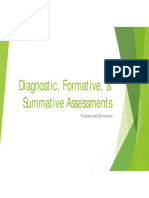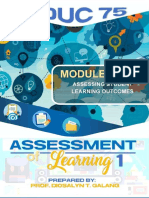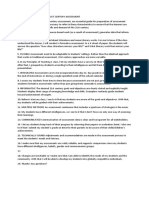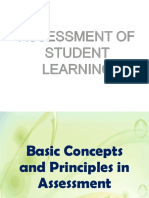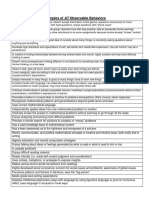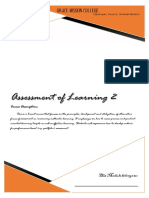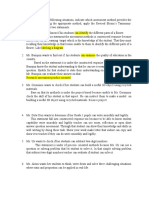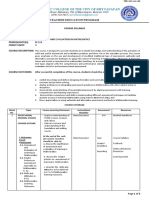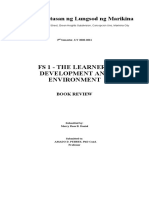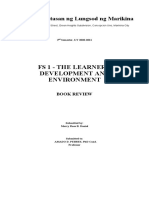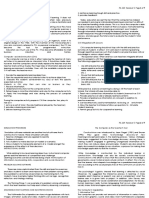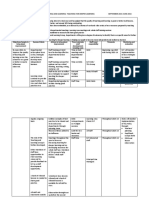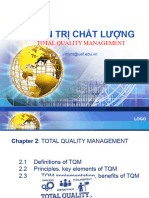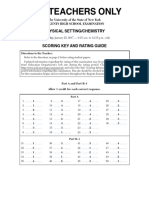0% found this document useful (0 votes)
2K views34 pagesChapter 1 Basic Concepts in Assessment
This document provides an overview of key concepts in assessment of learning. It defines assessment as collecting and interpreting information about student learning. Assessment can be formative, involving continuous feedback to improve instruction and learning, or summative, measuring student competency at the end. Formative assessment examples include conferences and quizzes, while summative examples are tests and projects. Effective assessment is clear, uses varied procedures, and provides feedback to improve student performance.
Uploaded by
Marry DanielCopyright
© © All Rights Reserved
We take content rights seriously. If you suspect this is your content, claim it here.
Available Formats
Download as PPTX, PDF, TXT or read online on Scribd
0% found this document useful (0 votes)
2K views34 pagesChapter 1 Basic Concepts in Assessment
This document provides an overview of key concepts in assessment of learning. It defines assessment as collecting and interpreting information about student learning. Assessment can be formative, involving continuous feedback to improve instruction and learning, or summative, measuring student competency at the end. Formative assessment examples include conferences and quizzes, while summative examples are tests and projects. Effective assessment is clear, uses varied procedures, and provides feedback to improve student performance.
Uploaded by
Marry DanielCopyright
© © All Rights Reserved
We take content rights seriously. If you suspect this is your content, claim it here.
Available Formats
Download as PPTX, PDF, TXT or read online on Scribd
/ 34


